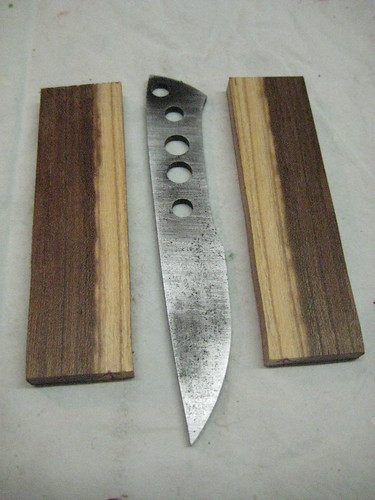Glad you found the advice helpful

They are great tools, probably the most useful tool in my pretty well kitted out workshop!
When you hold the angle grinder the wheel is cutting at the edge furthest from your body. That's assuming that you are right handed and have the body of the machine in your right hand and the handle in your left hand (reverse if a lefty). if you pull it towards you then you are stroking the metal with the flat side of the circumference and is very gentle. f you push it away then it cuts on the outer edge and digs in harder
I use thin cutting disks for cutting but you MUST NOT stray from dead straight or they can shatter at high speed. The standard cutting discs are more robust but take 3 times as long with a great deal more heat generated
Grinding discs are for hogging out steel and depending on how worn they are, they can produce anything from a 3" diameter hollow grind to something akin to a 14" hollow grind. Brand new discs are good for regrinding bevels on heat treated tools
Flapdiscs will give a flatter or more convex surface to bevels than the hollows of a hard wheel. The coarse (40 grit) remove metal almost as fast as grinding discs, but are 4x the price and wear out faster. The finer grits (80 and 120) are great for smoothing out grinding marks and blending nicer curves, also good for a finished texture if you like that on tools. Use a NEW 40grit or 60 grit followed by a NEW 120 for sharpening garden/woodland tools such as non-carving axes, hooks, slashers, etc. If you strop off the burr from a 120grit it will near as dam it shave! These wear at the outer edge of the wheel and become dull there a long time before the leaves of abrasive have worn down. So to prolong the life I use a cutting action (as though using a cutting disc) into the surface of a worn out grinding disc, this reduces the diameter by a couple of mm but exposes a fresh cutting edge

scotchbright flapwheel things are really good for a coarse satin finish after the `120 flapdisc on metal surfaces too.
When I first started getting into knifemaking (back in the 1990's), several books (all American) said dremels were indispensable, so I bought one. Hardly ever used it! I find the discs wear out too fast and have limited depth/length of cut as well as being delicate. Cutting out over sized with an angle grinder and then grinding out the contours is much much faster! I find the sanding drums pretty useful for things though, especially in place of a round file on hardened steel


